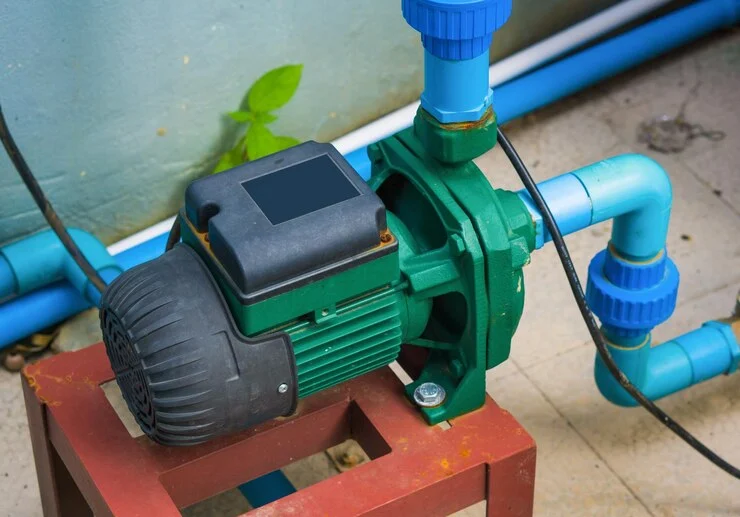Efficient and reliable drainage systems are essential in preventing flooding, water damage, and other issues associated with excess water buildup. Drainage pumps play a key role in removing excess water from various sources, ensuring that both residential and commercial properties are protected and remain dry.
Drainage pumps come in a wide range of types, each with its unique design specifications and features tailored for specific applications. Some common types of drainage pumps include submersible pumps, centrifugal pumps, self-priming pumps, and positive displacement pumps. Understanding the nuances of these different types, as well as their respective benefits and drawbacks, is essential in making an informed decision when selecting a pump for your drainage system.
In the following sections, we provide an in-depth look at the types, applications, and selection criteria for drainage pumps. Our goal is to help you gain a comprehensive understanding of drainage pump principles, allowing you to make an informed decision when choosing the best solution for your specific drainage needs.
Exploring Different Types of Drainage Pumps
1. Submersible Pumps
Submersible pumps are specifically designed to operate fully submerged in the fluid they are pumping. This type of pump is commonly used for drainage applications as it offers a number of advantages, including a compact design, quiet operation, and resistance to damage from water exposure. Submersible pumps are suitable for various applications, such as basement dewatering, sewage pumping, and industrial wastewater management.
2. Centrifugal Pumps
Centrifugal pumps utilise the principle of centrifugal force to move fluid away from the pump’s centre, creating a flow for efficient fluid transportation. These pumps are often used in drainage applications where high flow rates and low pressure are required, making them ideal for applications such as garden irrigation, stormwater management, and light industrial duties.
3. Self-Priming Pumps
Self-priming pumps are equipped with the ability to prime themselves without the need for manual intervention, facilitating a more convenient and efficient operation. The self-priming mechanism allows the pump to remove air from its suction line, making it suitable for applications where a fluctuating water level is encountered and a continuous flow is needed, such as dewatering on construction sites or temporary flood relief.
4. Positive Displacement Pumps
Positive displacement pumps work by trapping a fixed volume of fluid and then forcing it through the discharge pipe. These pumps are typically used in applications requiring high pressure and low flow rates, making them suitable for handling viscous fluids or materials with a high solids concentration. In drainage applications, positive displacement pumps are often utilised for handling sludge or wastewater with a high solids content.
Understanding Drainage Pump Applications
1. Domestic Drainage Solutions
In residential settings, drainage pumps can be utilised for various applications, such as removing excess water from basements, draining swimming pools, or irrigating gardens. Choosing the right pump for these applications often depends on factors like the required flow rate, head capacity, and the presence of solids or debris in the water.
2. Commercial and Industrial Drainage
Drainage pumps are essential in many commercial and industrial settings, particularly in the management of wastewater and stormwater runoff. These pumps can be employed in applications such as dewatering on construction sites, wastewater management in manufacturing facilities, or the handling of slurry in mining operations. Selecting the right pump for these situations depends on the system’s specific requirements and the nature of the fluid being handled.
3. Sewer and Stormwater Management
Drainage pumps play a key role in the management of sewer systems and stormwater runoff in both residential and commercial settings. These pumps are essential in removing wastewater and excess rainwater from low-lying areas, ensuring that properties and infrastructure are protected from water damage and flooding. The choice of pump for these applications is dependent on factors such as flow rate, head capacity, and the presence of solids in the water.
Selecting the Right Drainage Pump for Your Needs
1. Flow Rate and Head Capacity
When choosing a drainage pump, it is crucial to consider the required flow rate and head capacity in relation to your specific application. The flow rate refers to the volume of fluid the pump can move per unit of time, while head capacity represents the vertical distance through which the pump can move the fluid. Ensure that the desired pump has the appropriate flow rate and head capacity to effectively handle your drainage requirements.
2. Solids Handling Capacity
Depending on the application, the fluid being pumped may contain solids or debris that could potentially clog or damage the pump. When selecting a drainage pump, consider the pump’s solids handling capacity to ensure it can effectively manage the type of fluid being pumped without incurring damage or blockages.
3. Installation and Operating Environment
The installation environment and location of the pump should also be considered when selecting a drainage pump. For example, submersible pumps may be more suitable for below-ground installations or submerged applications, while self-priming pumps may be preferred in above-ground scenarios. Additionally, consider factors such as temperature, humidity, and potential exposure to corrosive or abrasive substances in the operating environment.
Final Thoughts
Drainage pumps are an essential component of effective water management systems, offering versatile solutions for various domestic, commercial, and industrial applications. By understanding the different types of drainage pumps, their applications, and selection criteria, you can choose the most suitable pump for your specific needs.
With the right drainage pump in place, you can maintain an efficient and reliable drainage system that protects your property and promotes responsible water management. If you need assistance in selecting the right drainage pump solution for your situation, our team of experts at A&C Pumps Ltd is here to help provide guidance and support throughout the decision-making process.

